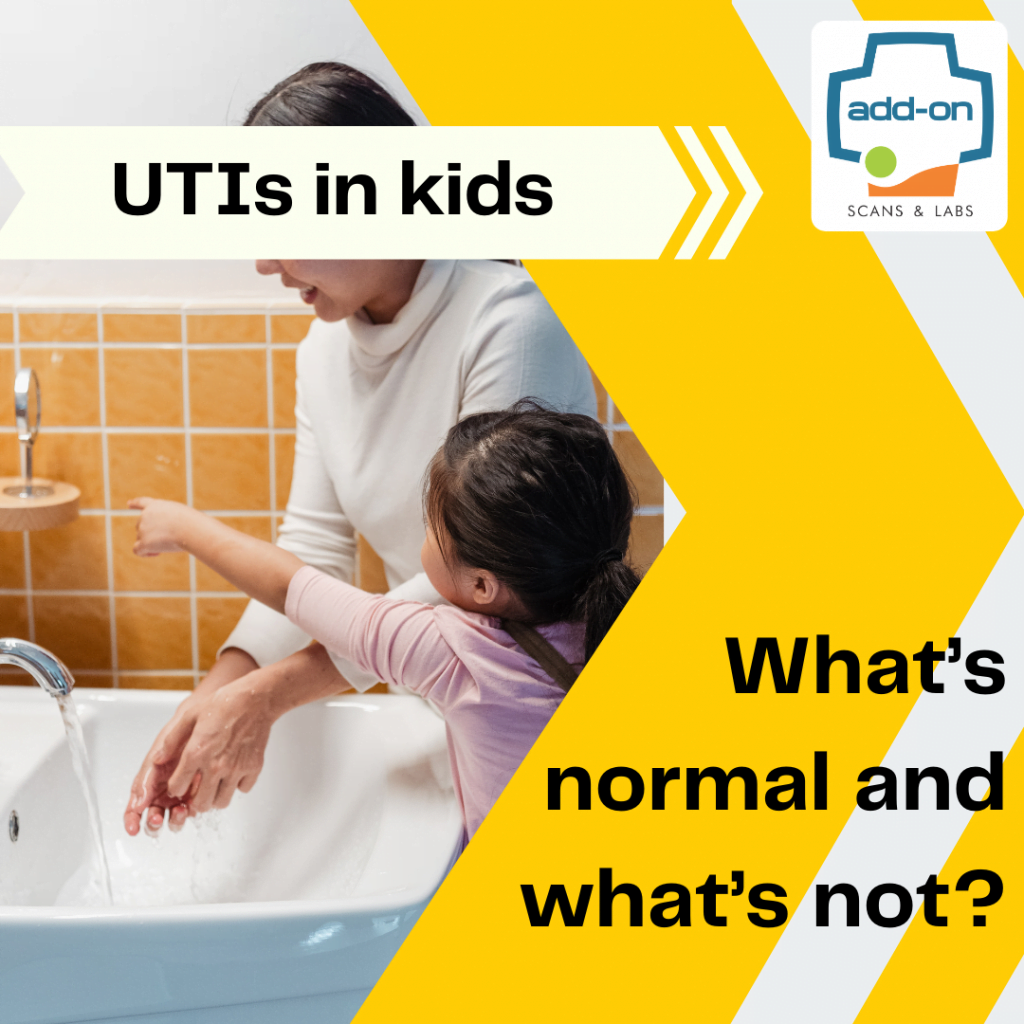UTI’S IN KIDS: WHAT’S NORMAL AND WHAT’S NOT
Urinary tract infections (UTIs) are common in kids and can be distressing to deal with. However, UTIs are easy to treat and usually clear up in a week or so with full recovery. Nevertheless, it is important to keep a check on your infant’s or child’s bladder habits as your child may be too young to be able to explain what feels wrong or to diagnose the underlying problem if UTI is a frequently occurring problem for your child.
What is UTI?
UTI occurs when bacteria enter the urinary tract and travels up the urethra and into the body. Bacteria that enter the urethra are usually flushed out through urination. However, when they are not expelled, they may grow within the urinary tract.
It mostly happens in the lower part of the urinary tract, the urethra (the tube that empties urine from the bladder) and the bladder (stores urine until it’s removed from the body). This type of UTI is called cystitis. Infection that travels up to the ureters (tubes that take urine to the bladder from kidneys) to the kidneys (filters blood and extra water to produce urine) is called pyelonephritis and is usually more serious.
What are the symptoms?
A child with cystitis may experience:
- Pain and burning sensation when peeing
- Increased urge or frequent need to pee
- Bedwetting even if the child is potty trained
- Fever
- Belly pain in the bladder region (bellow belly button)
- Foul-smelling urine
- Blood in the urine
In case of infection that travels up to the kidneys, more serious symptoms along with the above-mentioned symptoms can be developed.
- Fever (sometimes with shaking chills)
- Pain in the side of the stomach or back
- Nausea and vomiting
What are the causes?
UTIs are more common in girls because their urethras are shorter. Infrequent or delaying of urination for longer periods of time and poor hygiene habits are the most common causes.
Other risk factors include:
- Deformity or blockage in one of the organs of the tract
- Abnormal backward flow (reflux) of urine from the bladder up to the ureters and toward the kidneys. This is called vesicoureteral reflux (VUR)
How are UTIs diagnosed?
To diagnose, your doctor will do a physical exam and take a urine sample. How a sample is taken will depend on the child’s age. Older kids can simply pee into a sterile cup. For younger children in diapers, usually a catheter (a thin tube) is inserted into the urethra up to the bladder to get a urine sample.
If the initial signs are overlooked and untreated, or if your child is prone to long-term UTI complications, your doctor might refer you to a nephrologist (kidney specialist) and one or more additional tests may be required.
- Kidney and bladder ultrasound
- Voiding cystourethrogram (VCUG): is an X-ray that’s taken while a child’s bladder is full. A contrast dye is injected into the bladder and when the child urinates, typically through a catheter, urine flow out of the body is observed.
- Nuclear Scan: in which pictures of the kidneys are taken after injecting a small amount of radioactive material called an isotope.
- CT scan or MRI of the kidneys and bladder.
Treatment of UTI in children
If your child is diagnosed with a simple bladder infection, it is likely to be treated with antibiotics at home. Pain medication may also be prescribed if the child has severe pain while peeing. Severe infection may need treatment in a hospital so the child gets antibiotics by injection or intravenously.
Hospitalization might be necessary if:
- In case of severe kidney infection or the child has a high fever
- Is younger than 6 months
- Bacteria from the infected urinary tract may have spread to the blood
- Unable to take oral medication due to dehydration and vomiting
How to prevent it?
UTIs in general or in kids are not contagious. Following these suggestions can help you prevent your child from developing an infection.
- Avoid bubble baths and strong soaps that might cause irritation. Wear cotton underwear instead of nylon as it’s less likely to encourage bacterial growth.
- Make sure your child drinks plenty of fluids and avoid caffeine.
- If your child is potty trained teach them the importance of good toilet hygiene.
- In infants and toddlers, frequent diaper changes will help prevent the infection.
- Teach your child to urinate frequently and not hold it in when they have to pee.
Give your child the prescribed medications as long as your physician advises, even if the symptoms are reduced. Your doctor may repeat the urine tests to confirm that the infection is gone. It’s important to make sure of this because an incompletely treated UTI can come back or spread.
If you are looking to schedule an Ultrasound Scan with us for your child who has been diagnosed with UTI, Call or WhatsApp us today at +91-9900811118 to know more
For booking an appointment click here.

